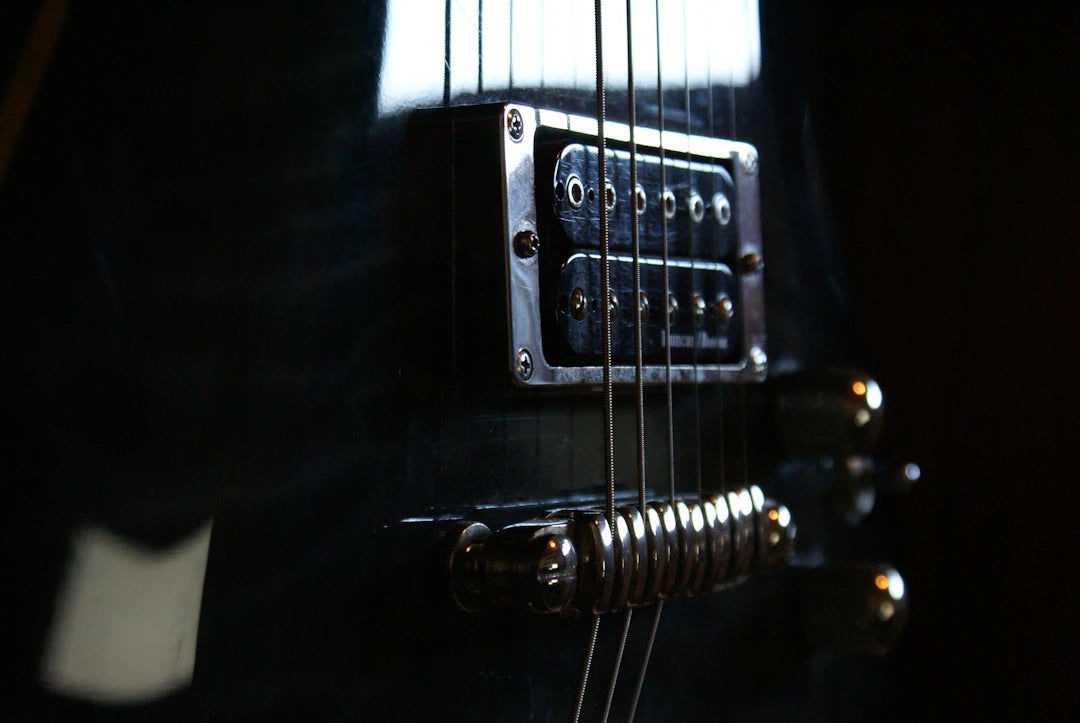Overview
Learn how to optimize your guitar pickups for improved sound quality with tips on adjusting height, experimenting with settings, maintaining pickups, and maximizing amp settings. Regular adjustments and upgrades can significantly enhance your tone and performance.
Frequently Asked Questions
1. What is the importance of adjusting guitar pickups?
2. What are pickups in a guitar?
3. How can I adjust pickup height for better tone?
4. What are the different pickup positions on a Stratocaster and their tonal characteristics?
5. How can I maintain my guitar pickups for optimal performance?
Adjusting your guitar pickups can drastically influence your sound, and mastering this technique can set your performance apart. In this guide, we will delve deeply into how you can tweak your pickups for optimal tone, whether you’re working with a classic Stratocaster pickup set or OEM guitar pickups. Let’s embark on this sonic journey!
Understanding Guitar Pickups
Before we jump into the adjustments, it’s vital to understand what pickups are and how they function. Pickups are magnetic devices that convert the vibration of guitar strings into electrical signals, which are then amplified to create sound. There are several types of pickups, including single-coil and humbucker, each with its unique tonal characteristics.
The Role of Pickup Height
The height of your pickups is crucial in achieving your desired sound. The distance from the strings affects both the volume and tone of your guitar. Here’s how to adjust pickup height effectively:
- Measure Distance: A good starting point for a Stratocaster pickup set is to measure about 1/8 inch from the bottom of the pickup to the string when fretted at the last fret.
- Adjust for Preference: If you want a brighter sound, increase the pickup height, but be cautious—too close can cause distortion and feedback.
- Use a Ruler: Consistency is key. Use a ruler to ensure that pickups are at equal distances from the strings for balanced output.
Experimenting with Pickup Settings
Every guitarist has a unique tone preference, and often, this can be adjusted by experimenting with your pickup settings. Here are some tips to find that perfect sound:
Choose Your Pickup Configuration
On a Stratocaster, you might choose to use different combinations of pickups—neck, middle, or bridge. Each position offers a distinct tonal flavor:
- Neck Pickup: Produces a warm, full-bodied sound ideal for jazz and blues.
- Middle Pickup: Offers a balanced tone that works well for rhythm sections.
- Bridge Pickup: Bright and sharp, perfect for lead solos and rock riffs.
Understanding Distance and Angle
The angle of the pickup can also modify the sound. Ensure that the pickups are parallel to the strings. If one end is closer than the other, it may produce an uneven sound. For a more aggressive tone, tilt the pickup slightly toward the bridge.
Balancing Your Pickups
When using a Stratocaster pickup set or any other OEM guitar pickups, balancing the output between each pickup is essential. Imbalance can lead to difficulty in blending tones smoothly. Here’s how to achieve that balance:
Adjusting Individual Pickup Heights
Adjust each pickup individually and test the sound by playing chords and single notes. Listen carefully for volume differences and tweak the heights until all pickups sound balanced. This approach allows for greater versatility in sound.
Knobs and Switches: Don’t Forget Them!
It's important to remember that tone and volume knobs play a significant role in shaping your sound as well. Experiment with these controls while adjusting pickups. Roll back the tone knob for a warmer sound or engage the volume to maximize your output. Each combination can unveil a new tonal palette.
Importance of Regular Maintenance
Just like string changes, pickup adjustments must be part of your regular maintenance routine. Periodically evaluating your pickup settings ensures that you retain your expected tone quality. Consider doing this during string changes or when you notice a change in your sound.
Cleaning Your Pickups
Cleansing the pickups can significantly affect tone and performance. Dust, dirt, and moisture can accumulate and affect the magnetic field, leading to a less-than-optimal sound.
- Use a Soft Cloth: Wipe down the pickups gently with a microfiber cloth.
- Check for Loose Components: Ensure all screws and wiring are intact, as loose parts can affect performance.
Utilizing Pickup Covers and Shields
Consider using covers or shields to protect your pickups, especially if you regularly play in various environments. They can prevent unwanted interference and extend the longevity of the pickups while preserving your tone.
Upgrade Your Gear
Sometimes the quest for optimal tone requires upgrading to higher quality pickups. Aftermarket and named models can offer significant differences in sound quality, attack, and sustain. While OEM guitar pickups come built with solid quality, exploring aftermarket options can result in discovering a sound that fits your style perfectly.
Maximizing Your Amp Settings
Your amplifier settings can also play a crucial role in how your pickups perform. No matter the adjustments made to your guitar, the amp effectively shapes the final sound. Consider these points when dialing in your tone:
Gain and Volume Levels
Leaving your gain and volume at appropriate levels will enhance clarity and definition. Too much gain can result in muddiness, obscuring subtleties in your tone.
Tweaking EQ Settings
Experiment with different EQ settings on your amplifier. Boosting mid-range can complement a Stratocaster pickup set effectively, reducing harshness in higher frequencies while enhancing overall fullness.
The Journey Doesn’t Stop Here
Adjusting your guitar pickups is just one aspect of fine-tuning your sound. Continue experimenting, learning, and refining your technique. Your optimal tone is not a destination—it's a journey that evolves with your playing style and musical influences. So grab your tools, embrace the process, and let your guitar singing with clarity and depth!
Linked Product
Odyssey Traditions 1954 Stratocaster Pickup Set
The Odyssey Traditions 1954 Stratocaster Pickup Set is designed to enhance the tonal versatility of your guitar. With a focus on vintage sound quality, these pickups allow for precise adjustments to help you achieve your desired tone. Ideal for musicians looking to refine their instrument's sound, this set complements the techniques discussed in our blog on adjusting pickups.
View Product










